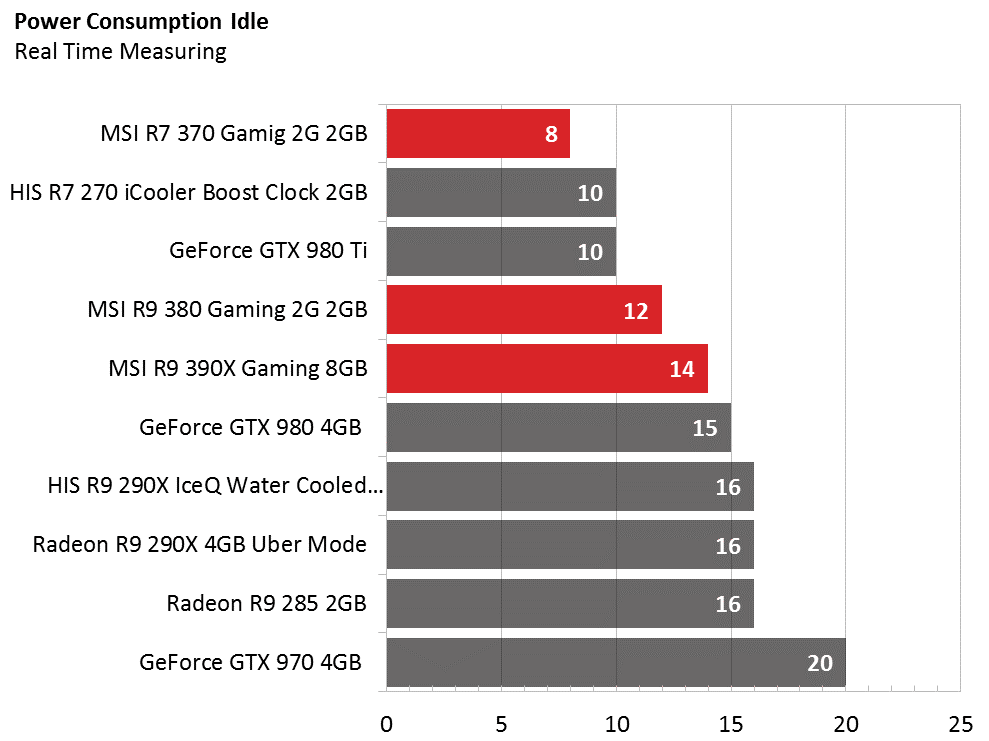AMD Radeon R9 390X, R9 380 And R7 370 Tested
AMD's 300-series Radeons dropped today, and we've got three MSI cards in the lab: the R9 390X Gaming 8G, the R9 380 Gaming 2G and the R7 370 Gaming 2G.
Idle Power Consumption
Note
The peaks in these tables don’t always occur at the same time. This means that the total peak power consumption isn’t always the sum of the peaks on the individual rails, since maximums can happen at different times.
Power consumption on the Windows desktop isn’t particularly interesting. However, it’s an important measurement for anyone who doesn’t spend all of their time rendering and encoding (most of us). Since none of these cards are actually new, it’s interesting to see how efficient MSI’s board design really is. ZeroCore Power isn’t really the object of these measurements, but it does work.
MSI R9 390X Gaming 8G
Let’s start with the highest-end card. An average of 14W for the entire measurement duration is a bit under that of AMD’s reference board, which can be explained by MSI’s fan turning itself off.
| Header Cell - Column 0 | Minimum | Maximum | Average |
|---|---|---|---|
| PCI-E Total: | 0.00 W | 40.32 W | 11.68 W |
| Mainboard 3.3V: | 0.66 W | 1.98 W | 1.24 W |
| Mainboard 12V: | 0.00 W | 7.56 W | 1.50 W |
| VGA Card Total: | 0.66 W | 41.97 W | 14.41 W |
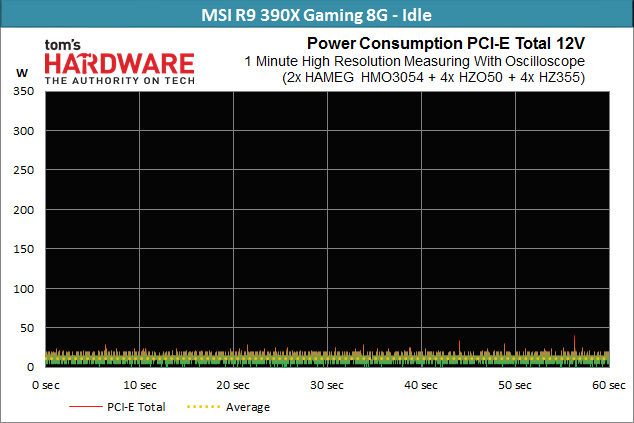
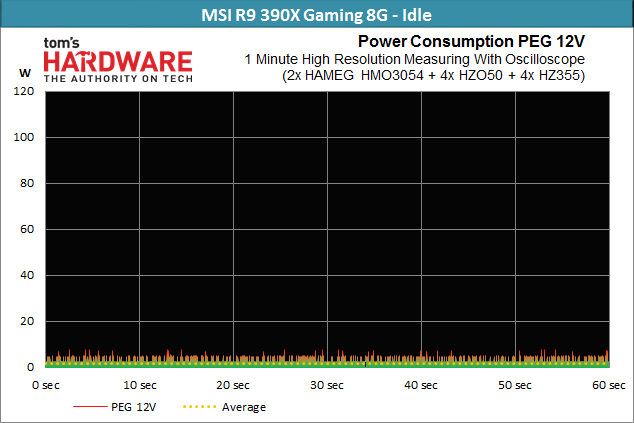
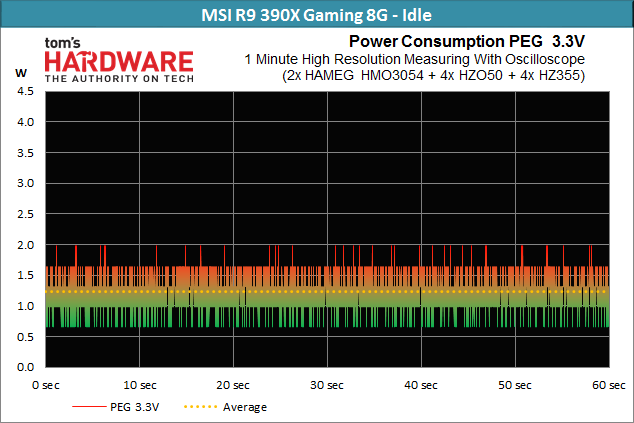
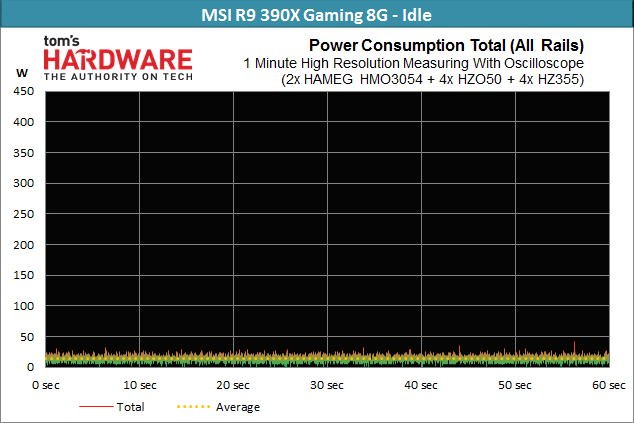
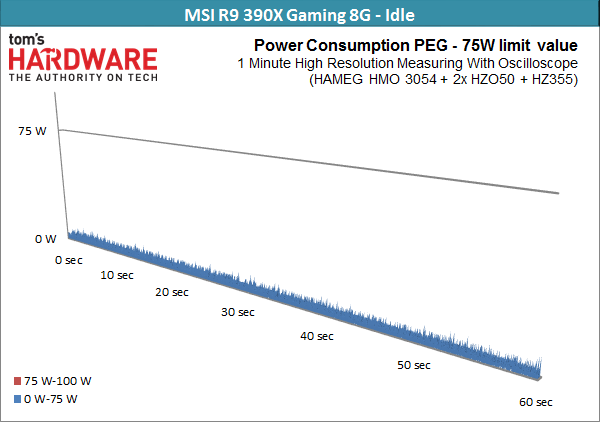
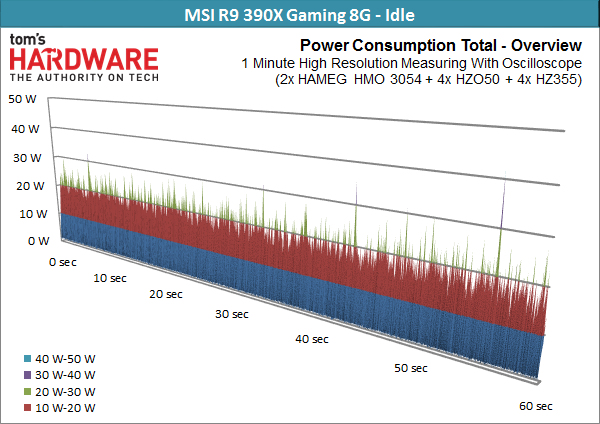
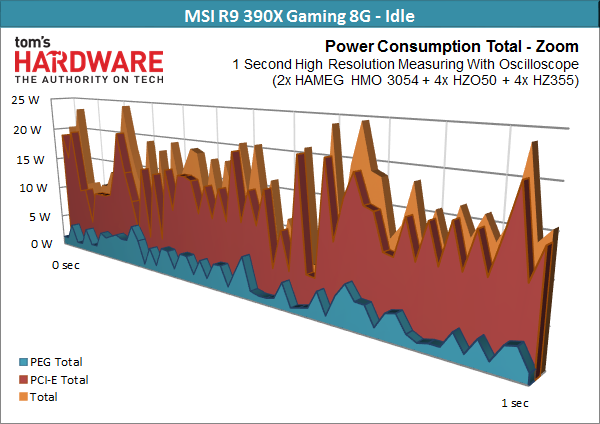
MSI R9 380 Gaming 2G
The mid-level graphics card comes in at just under 13W, which is just a bit less than its larger sibling. Understandably, it behaves in a very similar manner.
| Header Cell - Column 0 | Minimum | Maximum | Average |
|---|---|---|---|
| PCI-E Total: | 0.00 W | 24.40 W | 10.14 W |
| Mainboard 3.3V: | 0.00 W | 1.32 W | 0.32 W |
| Mainboard 12V: | 0.00 W | 9.76 W | 2.27 W |
| VGA Card Total: | 0.00 W | 32.05 W | 12.73 W |
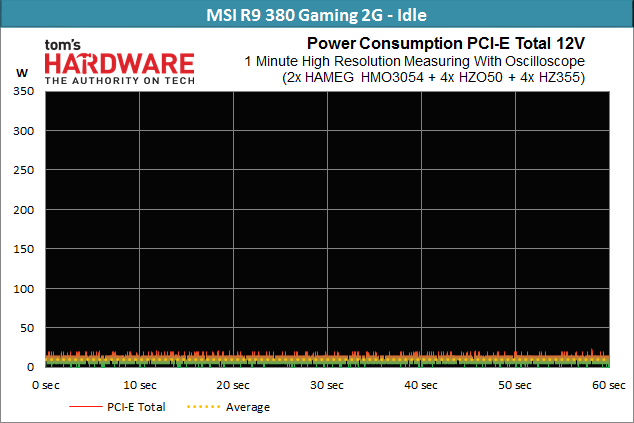
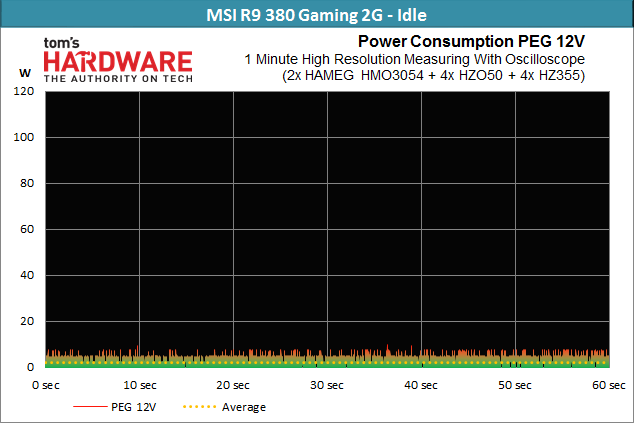
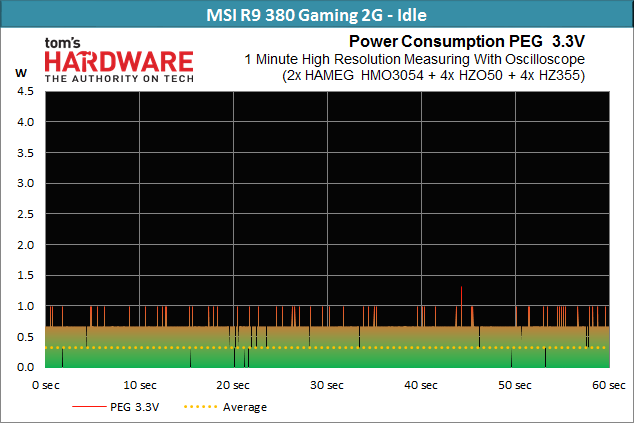
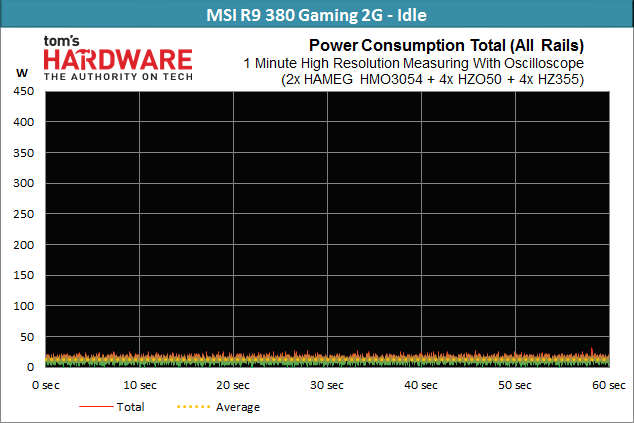
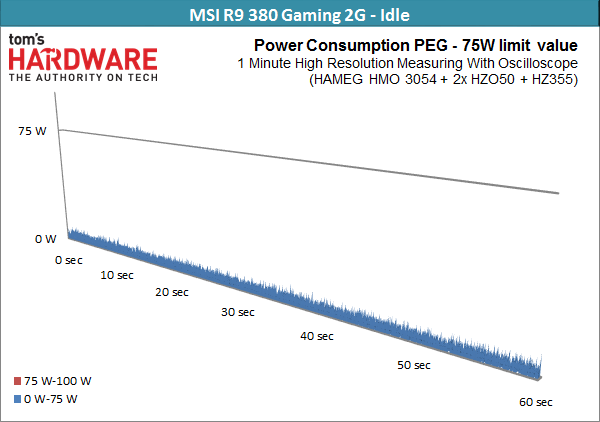
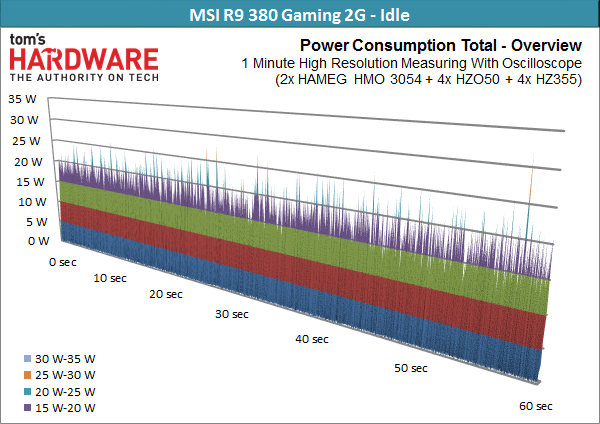
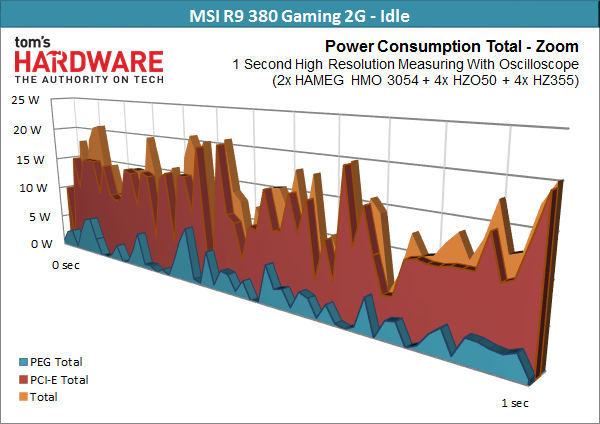
MSI R7 370 Gaming 2G
The smallest model is a lot more miserly when it comes to power consumption at idle. Its 8W reading is a great result.
| Header Cell - Column 0 | Minimum | Maximum | Average |
|---|---|---|---|
| PCI-E Total: | 0.00 W | 15.60 W | 3.95 W |
| Mainboard 3.3V: | 0.99 W | 2.64 W | 1.90 W |
| Mainboard 12V: | 0.00 W | 10.08 W | 2.30 W |
| VGA Card Total: | 1.32 W | 24.99 W | 8.16 W |
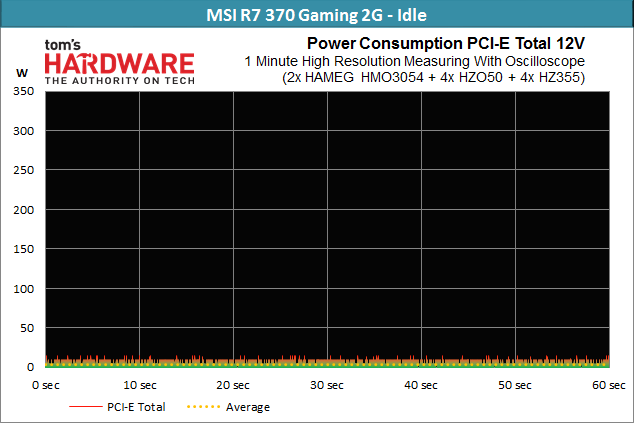
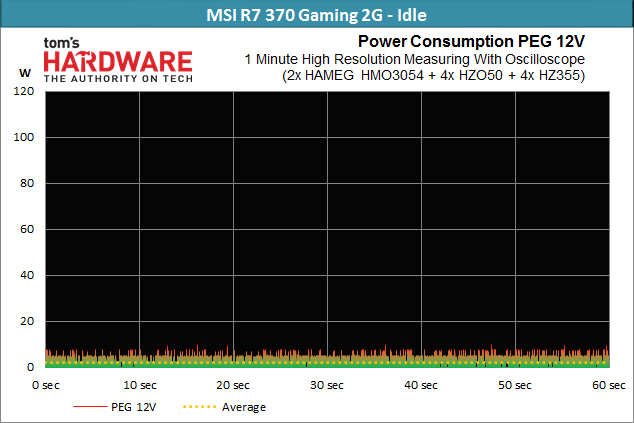
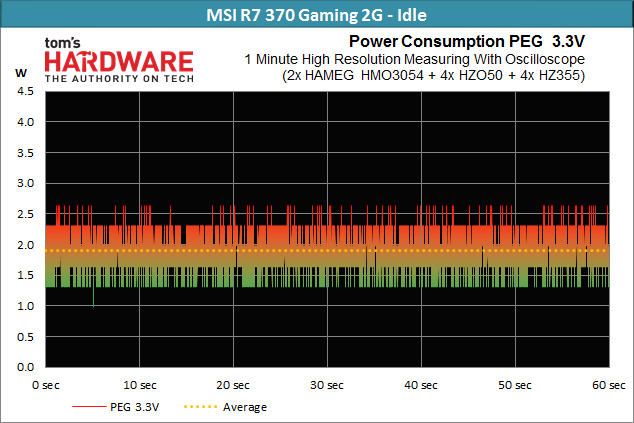
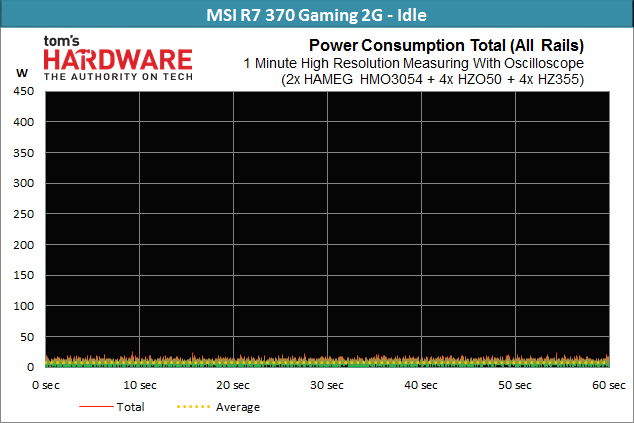
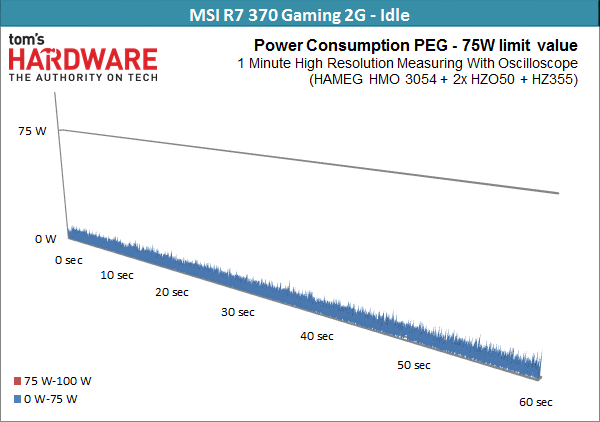
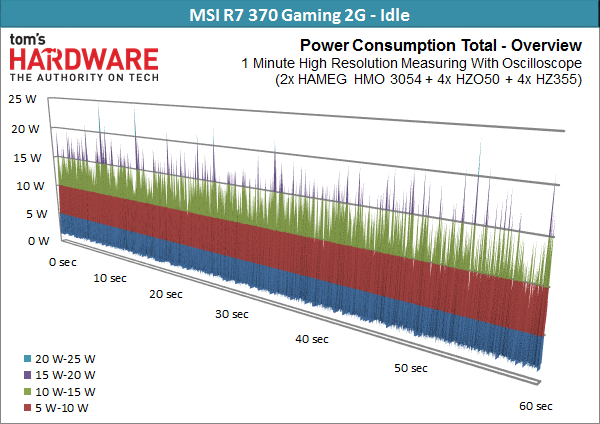
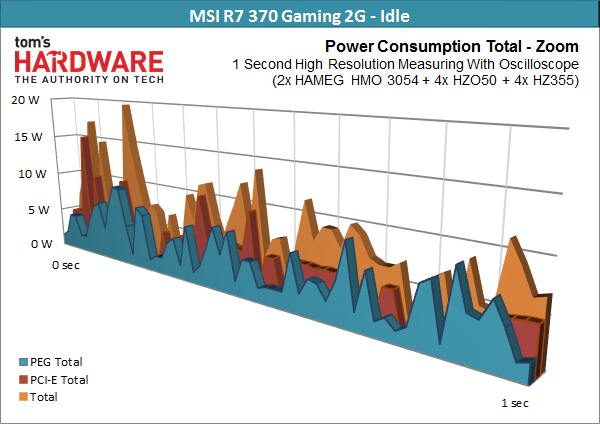
Get Tom's Hardware's best news and in-depth reviews, straight to your inbox.
Current page: Idle Power Consumption
Prev Page Workstation And Professional Applications Next Page Gaming Power Consumption
Igor Wallossek wrote a wide variety of hardware articles for Tom's Hardware, with a strong focus on technical analysis and in-depth reviews. His contributions have spanned a broad spectrum of PC components, including GPUs, CPUs, workstations, and PC builds. His insightful articles provide readers with detailed knowledge to make informed decisions in the ever-evolving tech landscape
-
Grognak 390X at 4K is the only one showing anything that could be called an improvement and that's entirely due to the additional RAM, which you can already get on a 290X. I fear for the future.Reply -
envy14tpe Again I am left disappointed....AMD please stop doing this to me. So what I learned is the 390X is the same as the 290X at 1440p or below (which is 95% or more of gamers) and the 390X only excels at 4k but still only on par with the 980 (non ti). Looks like I'm abandoning AMD for my next GPU. damn it.Reply -
FormatC ReplyWhy did you ignore 390?
I can only test what I have. Too less samples :(
The 390X is'nt a bad card per se - it depends a lot at the price and your personal preferences. -
fudoka711 Wait, I think I'm misunderstanding something. Is the 390x a rebranding of the 290x, but costing $100 more??Reply -
HideOut ReplyNice to see 980 Ti still stomps everything, glad I bought one... a wise investment!
These are rebadge cards, their new cards are due out in days. Fanboy -
de5_Roy MSI R9 390X Gaming 8G's texture fillrate in the spec table (1st page) may have been incorrect. the gpu-z screeny shows 193.6 GTexels/sec.Reply
